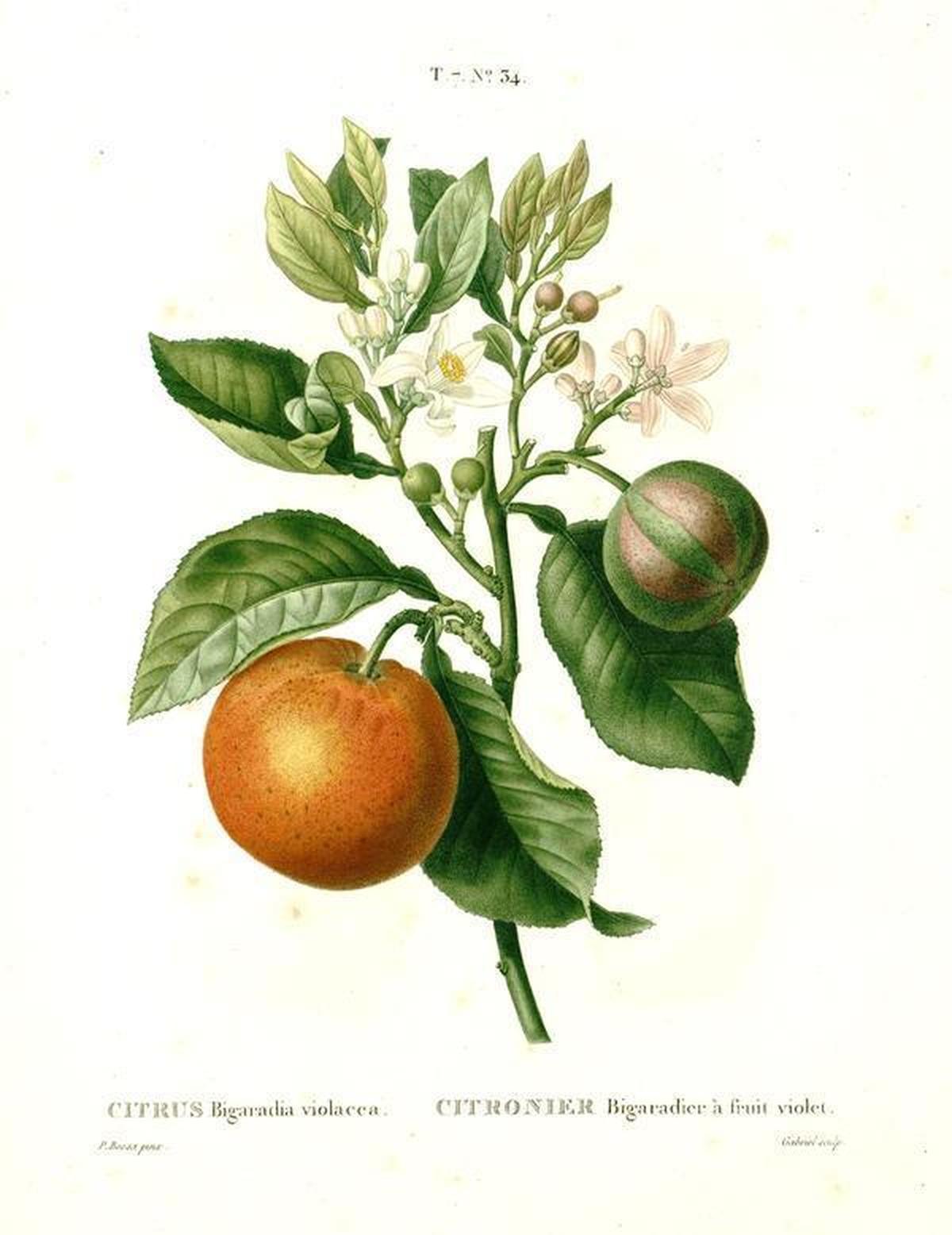Citrus × myrtifolia (Ker Gawl.) Raf.
RutaceaeComo otros cítricos, es originario de China. A diferencia del naranjo común, el moruno tiene hojas mucho más reducidas y frutos muy pequeños, de unos 5 centímetros de diámetro aproximadamente. El nombre específico myrtifolia pone de manifiesto la semejanza de sus hojas con las del Myrtus communis o arrayán. Las connotaciones edénicas que para los clásicos grecolatinos tenía los naranjos perviven en la cultura islámica medieval, posiblemente heredada de la propia China, donde existía la tradición generalizada de que la posesión de un naranjo aseguraba la felicidad a sus dueños. La costumbre islámica de los naranjos en espaldera -los cítricos arrimados a las paredes a modo de pantalla vegetal, por razones ornamentales y funcionales, “para resguardarlos del frío”, según recomendaba el agrónomo andalusí Ibn al-Awwam- se mantiene en la reforma del jardín del Real Alcázar realizadas por los monarcas de la casa de Austria, en un singular ejemplo de continuidad de la jardinería islámica en el Renacimiento del sur de España. No obstante, los naranjos en espaldera suelen ser de la variedad amarga u otro tipo de cítricos, más fáciles de podar que el moruno, que alcanza además gran altura, como los ejemplares que podemos ver en los jardines del Real Alcázar. Este desarrollo no se debe solo a la posible antigüedad de estos árboles, sino también a la tendencia a buscar más luz que caracteriza a los naranjos morunos.
Procedencia
Oriental/AsiáticoCalendario
Hábitat
Morfología
 Árbol
Árbol
 Esférica
Esférica
 Simple
Simple
 Lanceolada
Lanceolada
 Alterna
Alterna
 Ondulado
Ondulado
 Entero
Entero
 Cuneada
Cuneada
 Acuminado
Acuminado
 Agudo
Agudo
 Perenne
Perenne
